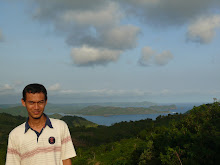
Takengon East Asia Minerals Corporation announced on February 26, 2007 that it has acquired a 75% interest in the Takengon property which covers approximately 19,000 hectares in Aceh Province, North Sumatra, the most under-explored part of the highly prospective Indonesian archipelago. Under the terms of the joint venture agreement East Asia will initially own a 75% interest in the project with no annual payments or minimum work commitments. The Takengon property encompasses the large, drill ready Collins epithermal gold prospect, a low sulphidation mineralized system associated with an elliptical magnetic feature, a NE-SW trending fault system, and indicative alteration. The mineralization consists of gold-bearing vein swarms and stockwork covering at least 400 by 800 metres. Of particular interest is detailed induced polarization data which suggests that the epithermal veins coalesce below the surface. Assays from several historic channel samples in the veins returned up to 11 ppm gold over 5 metres, along with elevated copper, lead and zinc. In addition to the Collins epithermal gold prospect, the Takengon tenement hosts three other known interesting prospects, identified by historic sampling. These include an outcrop of supergene enriched copper porphyry material immediately adjacent to the Collins prospect containing 2.58% copper and significant elevated gold; a gold-copper skarn mineralization zone returning up to 1 ppm gold and 1240 ppm copper; and another porphyry style mineralization zone just south of the Collins prospect where quartz vein stockworks contain visible chalcopyrite.Initial exploration work at Collins was completed during 1998. Drill targets were selected at that stage but were not drilled due to external issues. East Asia Minerals plans to re-establish these drill pads with minor compilation, confirmatory sampling and mapping, and then begin drilling.
(Takengon East Asia Minerals Corporation announced on February 26, 2007 that it has acquired a 75% interest in the Takengon property which covers approximately 19,000 hectares in Aceh Province, North Sumatra, the most under-explored part of the highly prospective Indonesian archipelago. Under the terms of the joint venture agreement East Asia will initially own a 75% interest in the project with no annual payments or minimum work commitments. The Takengon property encompasses the large, drill ready Collins epithermal gold prospect, a low sulphidation mineralized system associated with an elliptical magnetic feature, a NE-SW trending fault system, and indicative alteration. The mineralization consists of gold-bearing vein swarms and stockwork covering at least 400 by 800 metres. Of particular interest is detailed induced polarization data which suggests that the epithermal veins coalesce below the surface. Assays from several historic channel samples in the veins returned up to 11 ppm gold over 5 metres, along with elevated copper, lead and zinc. In addition to the Collins epithermal gold prospect, the Takengon tenement hosts three other known interesting prospects, identified by historic sampling. These include an outcrop of supergene enriched copper porphyry material immediately adjacent to the Collins prospect containing 2.58% copper and significant elevated gold; a gold-copper skarn mineralization zone returning up to 1 ppm gold and 1240 ppm copper; and another porphyry style mineralization zone just south of the Collins prospect where quartz vein stockworks contain visible chalcopyrite.Initial exploration work at Collins was completed during 1998. Drill targets were selected at that stage but were not drilled due to external issues. East Asia Minerals plans to re-establish these drill pads with minor compilation, confirmatory sampling and mapping, and then begin drilling.
Takengon East Asia Minerals Corporation announced on February 26, 2007 that it has acquired a 75% interest in the Takengon property which covers approximately 19,000 hectares in Aceh Province, North Sumatra, the most under-explored part of the highly prospective Indonesian archipelago. Under the terms of the joint venture agreement East Asia will initially own a 75% interest in the project with no annual payments or minimum work commitments. The Takengon property encompasses the large, drill ready Collins epithermal gold prospect, a low sulphidation mineralized system associated with an elliptical magnetic feature, a NE-SW trending fault system, and indicative alteration. The mineralization consists of gold-bearing vein swarms and stockwork covering at least 400 by 800 metres. Of particular interest is detailed induced polarization data which suggests that the epithermal veins coalesce below the surface. Assays from several historic channel samples in the veins returned up to 11 ppm gold over 5 metres, along with elevated copper, lead and zinc. In addition to the Collins epithermal gold prospect, the Takengon tenement hosts three other known interesting prospects, identified by historic sampling. These include an outcrop of supergene enriched copper porphyry material immediately adjacent to the Collins prospect containing 2.58% copper and significant elevated gold; a gold-copper skarn mineralization zone returning up to 1 ppm gold and 1240 ppm copper; and another porphyry style mineralization zone just south of the Collins prospect where quartz vein stockworks contain visible chalcopyrite.Initial exploration work at Collins was completed during 1998. Drill targets were selected at that stage but were not drilled due to external issues. East Asia Minerals plans to re-establish these drill pads with minor compilation, confirmatory sampling and mapping, and then begin drilling.


